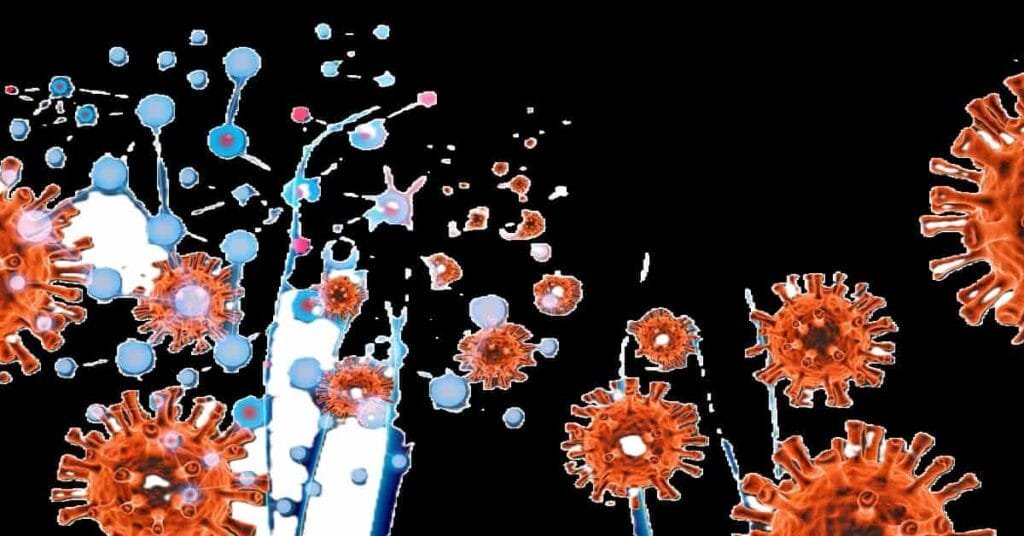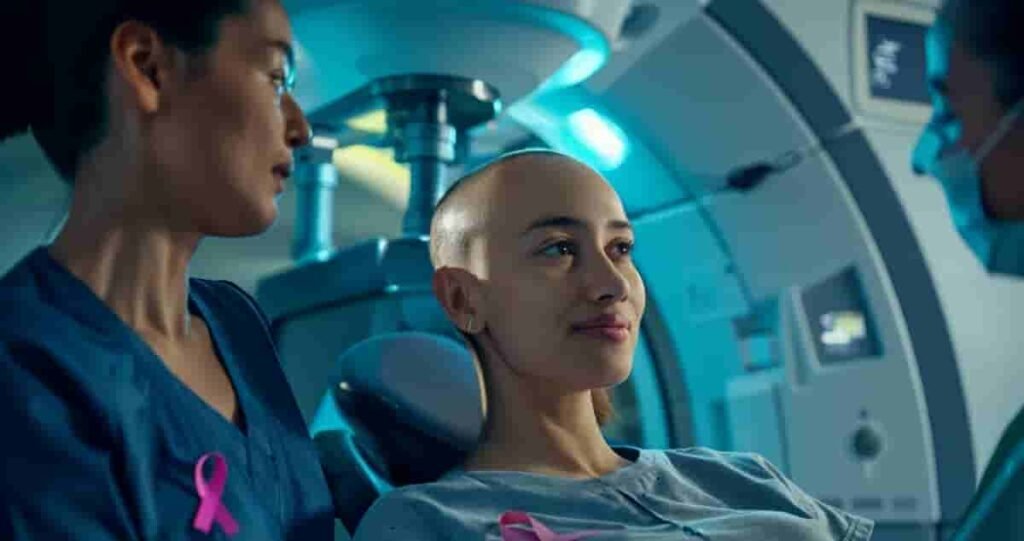Breast cancer. The words themselves can evoke fear and anxiety. It’s a disease that impacts millions worldwide, affecting not only those diagnosed but also their families and loved ones. Understanding breast cancer – its symptoms, various types, potential causes, and available treatments – is crucial for early detection, informed decision-making, and ultimately, better outcomes. This comprehensive guide aims to provide a detailed overview of these essential aspects, empowering you with the knowledge you need to navigate this complex disease.
Understanding the Breast and Breast Cancer
Before diving into the specifics, it’s important to understand the basics of breast anatomy and how cancer develops. The breast is primarily composed of lobules (milk-producing glands), ducts (tubes that carry milk to the nipple), and fatty tissue. These structures are supported by connective tissue and ligaments.

Cancer arises when cells within the breast begin to grow uncontrollably. These abnormal cells can form a tumor that may be felt as a lump or detected through imaging tests like mammograms. Not all lumps are cancerous; many are benign (non-cancerous) growths like cysts or fibroadenomas. However, any new or changing breast lump should be evaluated by a healthcare professional.
Recognizing the Symptoms: What to Look For
Early detection is paramount in the fight against breast cancer. While regular screening mammograms are crucial, it’s equally important to be aware of potential symptoms and to report any concerns to your doctor promptly.
Here’s a breakdown of common breast cancer symptoms:
- A new lump or thickening in the breast or underarm area: This is often the most common symptom and the one most people notice. It may feel hard, soft, or irregular.
- Change in the size or shape of the breast: One breast might become noticeably larger or have a different contour than the other.
- Nipple changes: These can include:
- Nipple retraction or inversion: The nipple pulls inward.
- Nipple discharge: Particularly if it’s bloody or clear and occurs without squeezing.
- Scaly, red, or swollen skin on the nipple or areola (the dark area around the nipple): This could be a sign of Paget’s disease, a rare form of breast cancer.
- Skin changes on the breast:
- Dimpling or puckering of the skin: The skin might look like it has small indentations or wrinkles.
- Thickening or swelling of the breast skin: The skin may feel thicker than usual and could be swollen.
- Redness, warmth, or inflammation of the breast: This could indicate inflammatory breast cancer, a less common but aggressive form.
- Pain in the breast: While breast pain is common and often related to hormonal fluctuations, persistent pain that doesn’t go away or is localized to one area should be checked.
- Swollen lymph nodes in the underarm or around the collarbone: This can indicate that cancer has spread to the lymph nodes.
Important Note: These symptoms don’t automatically mean you have breast cancer. Many other conditions can cause similar changes. However, it’s crucial to consult a doctor for a proper evaluation and diagnosis. Don’t delay seeking medical attention out of fear; early detection significantly improves treatment outcomes.
Understanding the Different Types of Breast Cancer
Breast cancer isn’t a single disease. It encompasses a variety of subtypes, each with its own characteristics, behavior, and treatment approaches. Understanding the specific type of breast cancer is essential for tailoring the most effective treatment plan.
Here are some of the most common types:
- Invasive Ductal Carcinoma (IDC): This is the most common type of breast cancer, accounting for around 70-80% of cases. It begins in the milk ducts and spreads outside the ducts into the surrounding breast tissue. From there, it can potentially spread to other parts of the body.
- Invasive Lobular Carcinoma (ILC): This is the second most common type, representing about 10-15% of cases. It starts in the lobules and, like IDC, can spread outside the lobules. ILC often presents differently than IDC, sometimes appearing as a subtle thickening or hardening of the breast rather than a distinct lump.
- Ductal Carcinoma in Situ (DCIS): This is considered non-invasive or pre-invasive breast cancer. DCIS is confined to the milk ducts and hasn’t spread to the surrounding tissue. While not immediately life-threatening, DCIS requires treatment because it can potentially progress to invasive cancer if left untreated.
- Lobular Carcinoma in Situ (LCIS): Similar to DCIS, LCIS is a non-invasive condition that starts in the lobules. It’s often considered a marker for increased risk of developing invasive breast cancer in either breast. While LCIS itself doesn’t typically require treatment, it necessitates close monitoring and may involve preventive strategies like medication or prophylactic mastectomy.
- Inflammatory Breast Cancer (IBC): This is a rare but aggressive type of breast cancer. It doesn’t usually present as a lump. Instead, it causes the breast to become red, swollen, and inflamed, often resembling an infection. IBC can spread rapidly and requires prompt diagnosis and treatment.
- Triple-Negative Breast Cancer (TNBC): This type of breast cancer is defined by the fact that it doesn’t express three receptors that are commonly found in breast cancer cells: estrogen receptor (ER), progesterone receptor (PR), and human epidermal growth factor receptor 2 (HER2). TNBC tends to be more aggressive and can be harder to treat than some other types of breast cancer.
- HER2-Positive Breast Cancer: This type of breast cancer has an excess of the HER2 protein, which promotes cancer cell growth. HER2-positive breast cancers tend to be more aggressive, but they can be effectively treated with drugs that target the HER2 protein.
- Metastatic Breast Cancer (MBC): This is breast cancer that has spread beyond the breast and nearby lymph nodes to other parts of the body, such as the bones, lungs, liver, or brain. MBC is also known as stage IV breast cancer. While it is not curable, it can be treated to help control the disease and improve quality of life.
Factors Contributing to Breast Cancer: Understanding the Causes and Risk Factors
While the exact cause of breast cancer is not fully understood, researchers have identified several factors that can increase the risk of developing the disease. It’s important to note that having one or more risk factors doesn’t guarantee that you will get breast cancer, and many women who develop breast cancer have no identifiable risk factors.
Here’s a look at some of the key factors:
- Age: The risk of breast cancer increases with age. Most breast cancers are diagnosed after age 50.
- Family History: Having a mother, sister, or daughter who has had breast cancer increases your risk. The risk is higher if your relative was diagnosed at a younger age.
- Genetics: Certain gene mutations, such as BRCA1 and BRCA2, significantly increase the risk of breast cancer. Genetic testing may be recommended for individuals with a strong family history of breast cancer.
- Personal History of Breast Cancer: If you’ve had breast cancer in one breast, you’re at an increased risk of developing it in the other breast or experiencing a recurrence.
- Previous Chest Radiation: Radiation therapy to the chest area, particularly during childhood or adolescence, can increase breast cancer risk later in life.
- Reproductive History: Factors like early menstruation (before age 12), late menopause (after age 55), and having no children or having your first child after age 30 can increase the risk.
- Hormone Therapy: Long-term use of hormone therapy for menopausal symptoms has been linked to an increased risk of breast cancer.
- Obesity: Being overweight or obese, especially after menopause, increases the risk of breast cancer.
- Alcohol Consumption: Drinking alcohol increases the risk of breast cancer. The risk increases with the amount of alcohol consumed.
- Lack of Physical Activity: Lack of regular physical activity may increase the risk of breast cancer.
- Dense Breast Tissue: Women with dense breast tissue (meaning they have more glandular and fibrous tissue and less fatty tissue) have a slightly higher risk of breast cancer, and it can also make it harder to detect cancer on mammograms.
- Diethylstilbestrol (DES) Exposure: Women who were exposed to DES in utero (a drug prescribed to pregnant women between 1938 and 1971 to prevent miscarriage) have a slightly increased risk of breast cancer.
Prevention Strategies: Taking Control of Your Health
While you can’t eliminate all risk factors for breast cancer, there are several steps you can take to reduce your risk and promote overall health:
- Maintain a Healthy Weight: Aim for a healthy weight through a balanced diet and regular exercise.
- Engage in Regular Physical Activity: Aim for at least 150 minutes of moderate-intensity or 75 minutes of vigorous-intensity aerobic activity per week.
- Limit Alcohol Consumption: If you drink alcohol, do so in moderation (no more than one drink per day for women).
- Consider Breastfeeding: Breastfeeding, if possible, has been linked to a reduced risk of breast cancer.
- Talk to Your Doctor About Hormone Therapy: If you’re considering hormone therapy for menopausal symptoms, discuss the risks and benefits with your doctor.
- Know Your Family History: Be aware of your family history of breast cancer and other related cancers.
- Get Regular Screening Mammograms: Follow the recommended screening guidelines for your age and risk level. Most organizations recommend annual mammograms starting at age 40 or 45.
- Perform Regular Breast Self-Exams: While not a substitute for mammograms, getting familiar with your breasts can help you detect any changes that might warrant further investigation.
- Consider Preventive Medication or Surgery: For women at very high risk of breast cancer, options like preventive medication (e.g., tamoxifen or raloxifene) or prophylactic mastectomy (surgical removal of one or both breasts) may be considered. These options should be discussed thoroughly with a healthcare professional.
Treatment Options: A Personalized Approach
Treatment for breast cancer is highly individualized and depends on several factors, including the type and stage of cancer, the patient’s overall health, and personal preferences. A multidisciplinary team of doctors, including surgeons, medical oncologists, radiation oncologists, and other specialists, will work together to develop the most appropriate treatment plan.
Here are some of the common treatment options:
- Surgery:
- Lumpectomy: Removal of the tumor and a small amount of surrounding tissue. Often followed by radiation therapy.
- Mastectomy: Removal of the entire breast. Different types of mastectomies exist, including simple mastectomy (removal of the breast tissue), modified radical mastectomy (removal of the breast tissue and some lymph nodes), and skin-sparing mastectomy (preserves the skin of the breast).
- Lymph Node Dissection: Removal of lymph nodes in the underarm to check for cancer spread.
- Radiation Therapy: Uses high-energy rays to kill cancer cells. It can be used after surgery to destroy any remaining cancer cells or as a primary treatment for certain types of breast cancer.
- Chemotherapy: Uses drugs to kill cancer cells throughout the body. It’s often used for breast cancer that has spread to other parts of the body or to reduce the risk of recurrence after surgery.
- Hormone Therapy: Blocks the effects of hormones, such as estrogen and progesterone, on cancer cells. It’s used for hormone receptor-positive breast cancers.
- Targeted Therapy: Uses drugs that target specific proteins or pathways that cancer cells need to grow and survive. It’s often used for HER2-positive breast cancers.
- Immunotherapy: Boosts the body’s immune system to fight cancer cells. It’s being investigated as a treatment for certain types of breast cancer, including triple-negative breast cancer.
- Clinical Trials: Research studies that evaluate new treatments and approaches to breast cancer care.
Beyond Treatment: Survivorship and Long-Term Care
After breast cancer treatment, survivorship care is essential. This includes regular follow-up appointments with your doctor to monitor for recurrence, manage side effects of treatment, and address any physical or emotional concerns. Survivorship care also focuses on promoting overall health and well-being through healthy lifestyle choices, such as a balanced diet, regular exercise, and stress management. Support groups and counseling can also be valuable resources for breast cancer survivors.
The Importance of Early Detection and Awareness
Breast cancer is a complex disease, but with increased awareness, early detection, and advancements in treatment, survival rates continue to improve. By understanding the symptoms, risk factors, types, and treatment options for breast cancer, you can empower yourself to take control of your health and make informed decisions about your care. Remember to prioritize regular screening mammograms, be aware of any changes in your breasts, and consult your doctor with any concerns. Together, we can continue to fight against breast cancer and improve the lives of those affected by this disease.
Also Read,


